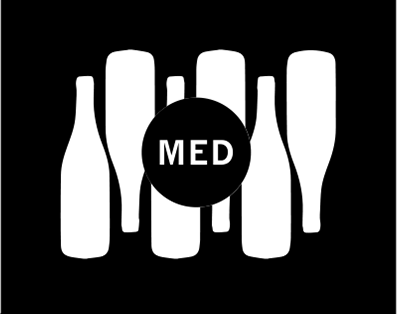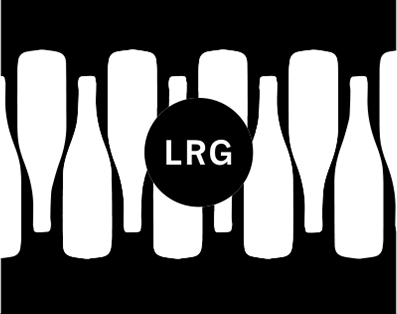20Q: Chris Coulter, Coulter Wines
It’s the final day of summer, but don’t let the calendar get you down. Summer is purely a state of mind, and chef-turned-winemaker Chris Coulter is here to help eradicate any change of season blues.
Chris is a roll-up-your-sleeves, high-energy type of guy, splitting his time between the Barossa Valley, where he is a winemaker for 1847 Wines, and the Adelaide Hills where he (and the rest of the family) make wines under his personal label, Coulter Wines. Our advice for the end of summer? Fling open the doors, set the barbecue to sizzle, pour yourself a good drink and settle in to read our interview with Chris, who talks ingredients for the perfect picnic, handpicking grapes in stilettos, and char siu pork with all the trimmings. It sounds to us like this summer is going to be an endless one…
1. Please tell us about what you do for a living.
I have a full-time role as a winemaker at 1847 Wines at Chateau Yaldara in the Barossa Valley. I also run my own project label called Coulter Wines. A typical day in my working life consists of emails, phone calls, tastings and overseeing winemaking operations at the Yaldara facility. After hours, I do exactly the same thing for my own label with more hands-on winemaking involved and a little sales and accountancy thrown in.
2. What did you do before winemaking became your full-time job?
I worked as a chef for various restaurants and resorts, ranging from localities in Melbourne, Dunk Island, Great Keppel Island and Toowoomba.
3. Is there a memorable moment from your career as a chef that you would like to share with us?
Watching one of my apprentices put a frozen mouse in another apprentice’s drink was memorable. I distinctly recall the look of pure disgust when the second apprentice realised what was in the drink he had just taken a gulp from!
4. What got you started in wine?
My father was a keen wine collector and had a decent collection of Australian red from the 1970s and 80s. When I was a young teenager he would often give me a glass with dinner, so my curiosity springs from those days.
5. How did you know that it was time to move from the kitchen to the vineyard?
Once I was hooked on wine and winemaking there was no going back; I was in boots and all. Part-time cooking paid for my degree, however once I was offered a full-time position with Australian Vintage Limited in Mildura it was an easy decision to hang up the apron and tongs.
6. Changing tack is never easy. How did you go about switching careers? What are some of the challenges you faced in starting over and, more recently, combining your work with 1847 Wines in the Barossa with the launch of your own label?
Changing careers was all about just doing it and not overthinking it. The first, difficult step is leaving behind the security of an established career and making the jump into the unknown of a new career, but for me it was very exciting at the same time. The most challenging thing was not having the experience and confidence to make decisions as I had in the kitchen, particularly when dealing with millions of dollars of your company’s juice and wine, but that has come with time. Starting my own label while working at Yaldara has also been a challenge from a time perspective, however my boss has been a great supporter of me doing this and I think he is a little proud that one of his winemakers has his own label.
7. Who has influenced your approach as a winemaker?
Two guys have had an influence on my winemaking and business approach. The first I’ll mention is Alex Trescowthick, ex-Nepenthe, who I worked with for a number of years. Alex is a genuine, naturally talented winemaker. His approach is all about planning, common sense and examining the facts to make decisions. It is a simple yet effective way to make good wine. Mac Forbes is another influence for me. Not only is he a great winemaker, he’s also a fantastic marketer and great with people. I aspire to be that personable. Other than that, my approach to winemaking comes from lots of tasting and attempting to emulate certain styles.
8. How has your previous career influenced you as a winemaker?
Cooking taught me structure, planning and time management, which are imperative elements in making good wine, especially when monitoring multiple ferments. A lot of the winemaking process is about timing and being proactive.
9. You’re amongst an interesting bunch of chefs-turned-winemakers in Australia, including Adam Foster (Syrahmi) and Steve Flamsteed (Giant Steps/Innocent Bystander). Do chefs do it better (winemaking, that is)?
Chefs are accustomed to working long hours while maintaining focus, which makes vintage easier and more enjoyable. Apart from that, I don’t think it makes a difference. Flamo and Adam are talented guys regardless of the fact they once were chefs.
10. Tell us a bit about Coulter Wines. What’s your philosophy for the label?
Coulter Wines is my project label; it allows me to make the wines I love to drink in an under-processed manner. I do add SO2 to the wines, but that is it! Otherwise, the wines are only ever gravity fed (i.e. not pumped) and get minimal movements; three in total for their entire life. This seems to retain vibrancy and fruit. I am very happy with the results so far.
The idea behind the label is to tell the story of my family’s involvement in the project. The first label was the C2 Sangiovese and it is shows a photo I took of my daughter foot stomping my 2015 Sangiovese. The C1 Chardonnay label features my son kicking his football. That photo has no direct link to my wine, apart from the fact it was my son’s idea and my label designer (Paul Heidenreich from Ocho Creative in Adelaide) tinkered with the image and made it work. The C5 Barbera label shows a photo of my wife picking fruit in stilettos, which was a mock up, however it embodies her perfectly. She is a woman who loves to dress up but has absolutely no problem putting in a day’s manual labour when required. In actual fact, Bec helps me with all handpicking.
11. Your Barbera 2016 is featured in our ENDLESS SUMMER pack. What should we be eating with it?
Char siu pork (Chinese barbecue pork) with all the trimmings, or Asian-style crispy pork belly. The Barbera has enough fruit to carry the flavour of the pork but also enough acid to cut through the richness.
12. What is it that makes the Adelaide Hills special?
The Adelaide Hills offer a great diversity of fruit profiles, and in good years they have the capacity to produce world-class examples of mainstream and alternate varieties.
13. What wine do you drink when you’re not drinking your own?
Barolo and all of Italy’s best for that matter; red and white Burgundy and lots of Champagne… when I can afford them. Otherwise, I love Yarra Valley Pinot, Hunter Valley Semillon and Coonawarra Cabernet Sauvignon.
14. How do you plan to spend the last day of summer?
Probably walking through crushed grape skins, fending off wasps, attempting to find the forklift keys and loving every minute… This is otherwise known as vintage!
15. Best meal this summer?
Yellow curry of snapper with brown rice and Chablis.
16. What’s your go-to album or radio station for winemaking?
A little Radio Birdman, from the album Radios Appear is always good to spark momentum.
17. The biggest myth surrounding wine is…
That it makes itself.
18. If you’re packing a summer picnic lunch, what goes in the basket?
Duck terrine, baguette, olives, cornichons, Ortiz anchovies and Pinot.
19. What are the perfect elements for a day in the great outdoors?
Family, beach, sun and a cricket bat and ball.
20. How do you wind down at the end of the day?
With a mountain bike ride, a cold beer and time with my kids.


